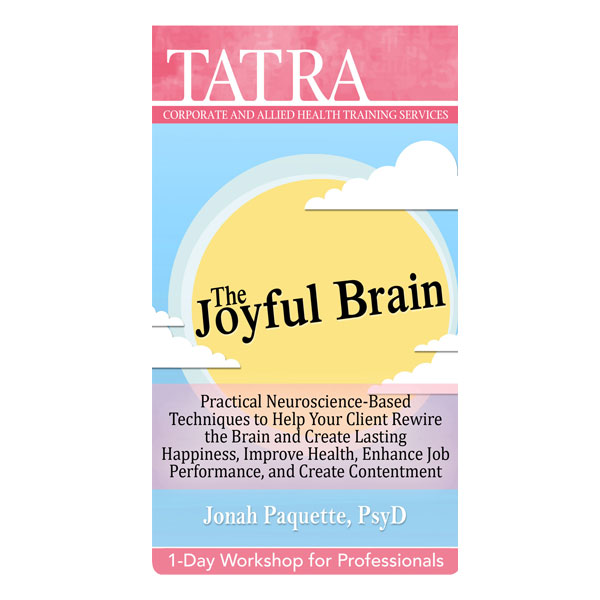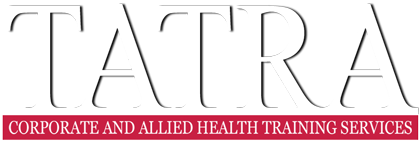The Joyful Brain – Practical Neuroscience-Based Techniques to Help Your Client Rewire the Brain and Create Lasting Happiness, Improve Health, Enhance Job Performance, and Create Contentment

Jonah Paquette, Psy.D
This workshop will provide you with science-based exercises and strategies you will be able to immediately introduce to your clients the very next day. You will learn a range of techniques that will allow your clients to change their daily habits, lift their moods and fight anxiety or depression, regulate emotions and improve general health and well-being.
Course Dates
Sydney: 14 October 2019, SMC Conference & Function Centre
Brisbane: 16 October 2019, Mantra on Queen
Melbourne: 18 October 2019, Bayview on the Park
Adelaide: 21 October 2019, Next Gen Memorial Drive
9:15am to 4:30pm
This workshop will provide you with science-based exercises that will equip you with strategies you will be able to immediately introduce to your clients the very next day. You will learn a range of techniques that will allow your clients to change their daily habits, lift their moods and fight anxiety or depression, regulate emotions and improve general health and well being. Teach your clients how to choose happiness by adding simple habits into their daily routines – putting them in a long-lasting and fulfilling state of mind.
Attend this workshop and articulate the benefits of happiness to our physical health, emotional well-being, relationships, and job performance; Explain how the brain’s negativity bias can lead to suffering, stress, and worry; Summarize the notion of positive neuroplasticity, and learn specific methods for creating lasting changes in the brain; Administer specific practices to cultivate gratitude, compassion, self-compassion, and connection – and understand how to integrate these practices effectively into treatment; Practice specific techniques to regulate the nervous system and stimulate the vagus nerve, to help promote feelings of peace, safety, and calm.; Explore specific areas of the brain linked to positive emotional states, and learn techniques to increase neuronal firing to these regions in order to create lasting change. You will leave this workshop refreshed and feeling confident knowing that you can now promote new and healthy habits, lifestyles and attitudes that, if implemented, will change your clients lives for good!
Learning Objectives
- Articulate the benefits of happiness to our physical health, emotional well-being, relationships, and job performance.
- Explain how the brain’s negativity bias can lead to suffering, stress, and worry.
- Summarize the notion of positive neuroplasticity, and learn specific methods for creating lasting changes in the brain.
- Administer specific practices to cultivate gratitude, compassion, self-compassion, and connection – and understand how to integrate these practices effectively into treatment.
- Practice specific techniques to regulate the nervous system and stimulate the vagus nerve, to help promote feelings of peace, safety, and calm.
- Explore specific areas of the brain linked to positive emotional states, and learn techniques to increase neuronal firing to these regions in order to create lasting change.
Program Outline
Happiness: The What, Why, and Why Not
- Defining Happiness: what it is, and what it isn’t
- Why Happiness matters: benefits to physical health, job performance, decreasing burnout, improving cognitive functioning, increasing longevity, and more
- Sources of Happiness: about 50% is genetic, 40% is within our power to change, and only 10% is affected by life circumstances.
- Myths of Happiness: how societal messages regarding happiness lead us astray
- Unsustainable Sources of Happiness: why improving life circumstances (e.g., income or one’s appearance) does not make us sustainably happier due to hedonic adaptation and the impact bias.
- Measuring Happiness: validated measures to assess well-being, strengths,
- Habits of Happy People: activities, thoughts, and beliefs that support positive emotions, thoughts, caring, commitment, motivation and meaning.
Barriers to Happiness: Why happiness can feel so hard to come by
- Understanding the negativity bias: Teflon for good, Velcro for bad
- The Impact of Genetics: what twin studies reveal about happiness
- Hedonic Adaptation: gravity for happiness
- Identifying the hurdles that are blocking contentment, and learning to overcome them
Creating Lasting Changes to the Brain
- Neuroplasticity: how the brain changes and is rewired throughout the lifespan
- Self-Directed Neuroplasticity: targeting specific regions of the brain linked to well-being through specific behaviors, practices, and habits
- Neurogenesis: fostering new neuronal growth
- How the brain changes through intentional practice: increased synaptic connection, thickening glial cells, and increased blood vessel density
- Affect Asymmetry: understanding the difference between the brain’s two hemispheres, and its implication for happiness and well-being
- Intentional Change: shifting out of the default mode in order to consciously foster change
The Joyful Brain – 50+ Neuroscience Based Techniques to boost Well-Being
- The Grateful Brain: how gratitude increases activation in the left prefrontal cortex, the hypothalamus, and the anterior cingulate cortex. The practice of gratitude is even linked to increased levels of serotonin and dopamine.
- Learn 10 practical exercises to foster gratitude including:
- The George Bailey Technique
- Meditations for Gratitude
- Reflecting on Hardship
- Three Good Things
- The Compassionate Brain: how compassion and kindness activate the limbic system, the dorsolateral prefrontal cortex, decrease cortisol, and spur the release of dopamine, oxytocin, and endorphins
- Practice 7 tangible techniques for harnessing compassion, including:
- Acts of Kindness
- The Gift of Time
- Fun versus Philanthropy
- The Mindful Brain: how the practice of mindfulness increases activation in the left prefrontal cortex, decreases amygdala sensitivity, increases hippocampal volume, and offsets cortical thinning.
- Learn 7 ways to easily incorporate mindful awareness into daily life, including:
- Mindfulness of the Senses
- 60 second awareness
- Everyday Mindfulness
- The Self-Compassionate Brain: in contrast to self-criticism, self-compassion decreases amygdala response along with increasing activation in the insula and left prefrontal cortex.
- Apply 5 easy-to-use practices for fostering self-compassion, including:
- Seeing the Double Standard
- Self-Compassion Break
- Self-Compassion vs. Self-Criticism
- The Social Brain: how our brains evolved for connection, and how social injury activates the same pain centers in the brain as physical injury.
- Explore 6 practical strategies for enhancing social connection, including:
- Active-Constructive Responding
- Balancing Technology
- A Letter of Gratitude
- The Optimistic Brain: the impact of optimism on the orbitofrontal cortex, the amygdala, and the left prefrontal cortex
- Learn 5 easy ways to boost optimistic thinking, including:
- A Positive Future
- Reflecting on Success
- Seeking the Silver Lining
- The Savoring Brain: how savoring increases activation in the ventral striatum and left prefrontal cortex, while reducing cortisol.
- Tap into 5 useful skills to bring savoring into everyday life, including
- Savoring across time
- Savoring through Visualization
- Everyday savoring
- Your Brain and Body on Awe: How awe leads to reduced inflammatory response, along with activation of the parasympathetic nervous system
- Boost your awe quotient through 5 practical steps, including:
- Awe through Nature
- Positive Inspiration
- Conceptual Vastness
- Strengths & Flow: how flow is linked to a state of transient hypofrontality, and how it leads to a cascade of neurotransmitters including dopamine, serotonin, and endorphins.
- Harness signature strengths through 5 practical tools, including:
- Creatively using strengths
- Identifying Signature Strengths
- Your Strengths Story
- Lifestyle Factors: The impact of specific lifestyle factors to lay the foundation for well-being – including key amino acids for synthesizing neurotransmitters, along with the impact of brain-derived neurotrophic factor (BDNF)
- How small lifestyle changes can help build a happier brain
- Learn practical strategies for improving sleep quality and quantity, promoting the relaxation response, and nourishing our brain with happiness-boosting nutrients
Workplace Implications – conquering burnout and chronic stress
- How the habits of happiness have been linked to reduced burnout, increased job performance, increased job retention, and workplace wellness
- How happiness is a cause for improved job performance, not the other way around
- How healthcare professionals face unique challenges to happiness, and how to overcome these challenges
- How gratitude, kindness, self-compassion, and mindful awareness improve work performance, job satisfaction, and job retention
- Work-Life Balance: can it really exist, and can we achieve it?
- Letting go: how to practice acceptance and forgiveness in challenging workplace situations
Happiness in the Digital Age: how to maintain well-being in our changing world
- The impact of technology and social media on well-being: the good news, and the bad news
- The effects of excessive screen time on mood and brain health
- How to create a healthy relationship with technology to foster lasting well-being
- Developing an “app-etite” for happiness: specific apps and websites that can enhance life satisfaction
- APS: Activities do not need to be endorsed by APS. Members can accrue 7 CPD hours by participating in this activity
- AASW: Members can accrue 7 CPD hours by participating in this activity
- ACA: Members can accrue 5 CPD points by participating in this activity
A certificate of attendance will be emailed to participants following the workshop.


